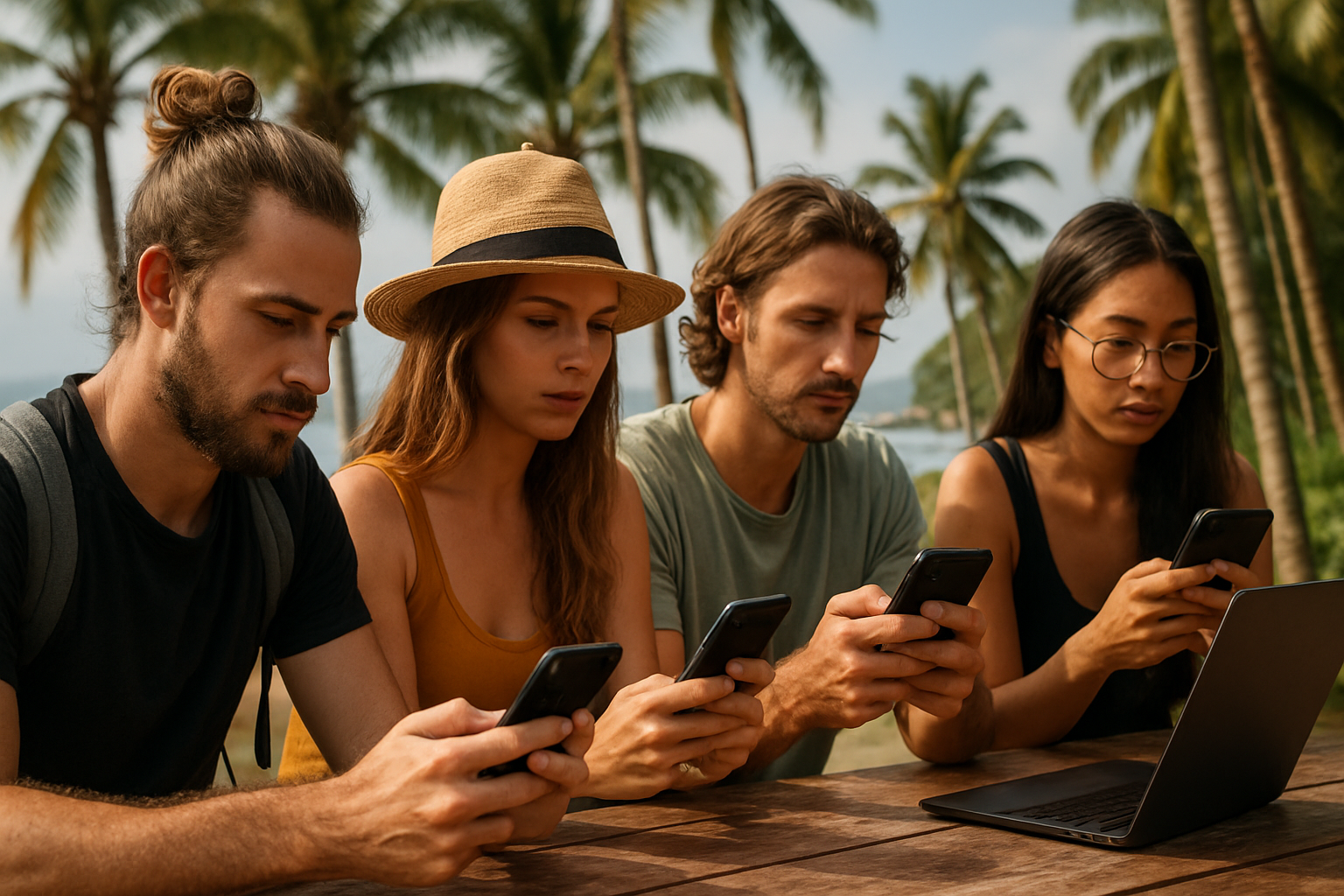What’s the best eSIM for backpackers?

What’s the Best eSIM for Backpackers?
Backpacking is all about freedom, flexibility, and discovery—but staying connected in a cost-effective way can be a challenge. Traditional mobile roaming is notoriously expensive, and buying physical SIM cards in every country is both inconvenient and inefficient. That’s where eSIMs come in.
eSIMs are embedded SIM cards built into your smartphone or device. They allow you to download a mobile data plan instantly—without needing a physical SIM card or visiting a local store. For backpackers, this means:
- No more hunting for SIM card vendors in airports or kiosks
- Seamless connectivity across multiple countries and regions
- Better control over your budget and data usage
- Fast activation from anywhere, anytime
Whether you’re navigating unknown cities, booking a last-minute hostel, or checking bus schedules in rural towns, a good eSIM ensures you’re always connected when it matters most.
Key Features Backpackers Need in an eSIM
Not all eSIMs are built the same—especially when it comes to long-term or multi-country travel. Backpackers have unique needs that should guide their choice of provider. Here’s what to look for:
1. Global or Multi-Country Coverage
Backpackers often cross multiple borders in one trip. A good eSIM should support dozens or even hundreds of countries on one profile to avoid frequent plan switching.
2. Affordable Pricing
Backpacking is usually done on a budget. Look for eSIMs with low-cost per GB, or unlimited plans if you’re a heavy data user.
3. Flexible Plans
Whether you’re traveling for a weekend or several months, the best eSIMs offer short-term, long-term, or pay-as-you-go options. Being able to pause or renew plans without penalties is a big plus.
4. Data-Only with VoIP Flexibility
Most eSIMs are data-only, which works perfectly if you’re using WhatsApp, FaceTime, Google Maps, Booking.com, or Zoom. Just ensure you have good VoIP call support and messaging capabilities.
5. Easy App Experience
Top providers have apps that let you track data, top-up, or change countries without needing tech support. This is essential when you’re on the go and can’t afford technical hiccups.
6. No Contracts or Roaming Charges
Backpackers need flexibility, not commitments. Make sure your eSIM provider doesn’t tie you to a long-term contract or tack on roaming charges in hidden fine print.
Best eSIM Providers for Backpackers (2025 Comparison)
| Provider | Best For | Coverage | Starting Price | Top Feature |
|---|---|---|---|---|
| Airalo | Budget-Conscious Travelers | 190+ Countries | From $4.50 (1GB) | Massive marketplace & regional bundles |
| Nomad | Digital Nomads | 110+ Countries | From $5.00 (1GB) | Monthly & long-term travel plans |
| Holafly | Unlimited Data Users | 130+ Countries | From $19 (5 days unlimited) | Truly unlimited with no speed caps |
| Firsty | Extreme Budget Backpackers | Global (with fallback) | Free basic internet / €1 for premium | Watch short ads for free access |
| Maya Mobile | Global-Region Hoppers | Multiple regions & global | From $6 (1GB) | Predefined region-based bundles |
Our Top Picks for Different Travel Styles
Best for Multi-Country Backpacking
If you’re visiting several countries in one trip—say Europe, Southeast Asia, or Latin America—Airalo or Maya Mobile are your go-to options. Both offer regional eSIMs (e.g., “Asialink” or “Eurolink”) that cover entire continents under one plan. You save money and avoid the hassle of switching eSIMs every few days.
Best Budget Option
Firsty is perfect if you need basic connectivity for free. By watching a 30-second ad, you get access to email, messaging, and maps. For €1/day, you can upgrade to faster data with no expiration, making it ideal for ultra-budget trips.
Best for Digital Nomads
Nomad offers a great user interface, solid global coverage, and plans ranging from daily to monthly. Its long-term pricing is competitive and ideal for digital nomads needing consistent, reliable data in multiple countries.
Best for Unlimited Usage
Holafly is your best bet if you burn through data—streaming, video calls, uploading vlogs, or working remotely. Its unlimited plans (starting at 5 days) make it a great fit for content creators or full-time travelers who don’t want to worry about GB limits.
eSIM Tips Every Backpacker Should Know
✅ Activate Before Departure
Most eSIMs require an internet connection to install and activate. It’s best to set them up while you’re still on Wi-Fi before heading out.
✅ Use Offline Apps
Apps like Google Maps, Maps.me, and Google Translate work offline. Download the necessary data in advance to save bandwidth and battery.
✅ Monitor Your Data
Use your eSIM provider’s app or built-in phone settings to track usage. Turn off background data for apps like Instagram or auto-syncing cloud services.
✅ Travel Insurance + eSIM Support
Some providers offer in-app customer support or 24/7 chat. That’s extremely valuable when you’re in remote regions with limited local resources.
✅ Carry a Backup Plan
It’s wise to keep a backup eSIM profile from another provider or store one in your phone so you’re never completely disconnected.
Final Verdict: Which eSIM Should You Choose?
| Travel Style | Best eSIM |
|---|---|
| 🧳 Budget Backpacker | Firsty |
| 🌐 Multi-country Explorer | Airalo or Maya Mobile |
| 📹 Heavy Data User | Holafly |
| 🧑💻 Digital Nomad | Nomad |
| 🌴 Southeast Asia Traveler | Airalo Asialink Plan |
Airalo is the most versatile and widely-used, making it a safe default. If budget is key, Firsty’s ad-supported model is a game changer. Meanwhile, Nomad and Maya Mobile offer convenience and pricing that work well for more serious or long-term travelers.
Discover eSIM providers




